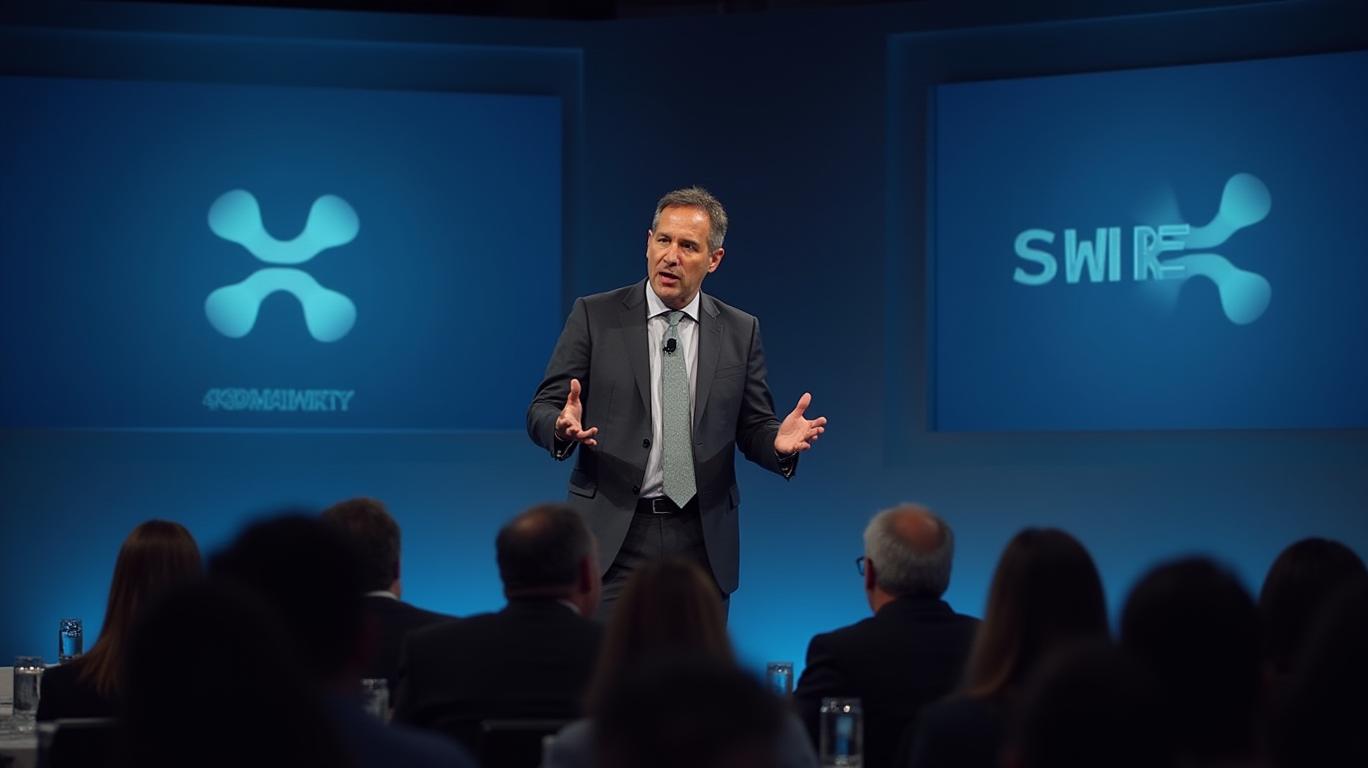XRP news today: Ripple Shifts Strategy, Seeks to Replace SWIFT with XRP
In 2020, David Schwartz, the Chief Technology Officer of Ripple, shared his vision for a future where the Society for Worldwide Interbank Financial Telecommunication (SWIFT) and Ripple collaborate. Schwartz's dream scenario involves SWIFT striking a deal with Ripple, allowing all SWIFT member banks to utilize RippleNet, Ripple's global payments network, at no cost. This ambitious proposal goes a step further, suggesting that SWIFT might even receive payments from Ripple for facilitating this integration. Schwartz's vision underscores Ripple's confidence in its technology and its potential to revolutionize cross-border payments by leveraging blockchain technology. This collaboration could significantly enhance the efficiency and speed of international transactions, benefiting both financial institutions and their customers. The proposal highlights Ripple's strategic approach to expanding its reach and influence in the global financial ecosystem, positioning itself as a key player in the future of digital payments.
Schwartz's comments reveal how Ripple once viewed integration with SWIFT as a strategic opportunity to accelerate XRP adoption across the global banking system. However, recent developments suggest this scenario no longer aligns with Ripple’s plans. Contrary to the speculation implied by resurfaced statements and circulating rumors, there is no confirmed partnership between Ripple and SWIFT. Recent claims suggesting SWIFT was testing XRP across its network of over 11,000 institutions were quickly dismissed. Ripple CEO Brad Garlinghouse has been direct in distinguishing Ripple’s strategy from SWIFT’s legacy approach. He described SWIFT’s messaging-based system as outdated, implying that Ripple’s focus on real-time settlement and tokenized liquidity offers a more viable solution for modern cross-border payment needs. This direct criticism shows the competitive relationship between the two parties. While Ripple may have once considered collaboration, the current stance from its leadership reflects a clear shift toward positioning Ripple as a replacement for SWIFT.
Ripple’s business model has evolved to directly challenge the systems SWIFT has built over the decades. With XRP’s increasing adoption across Asia, the Middle East, and Latin America, and growing attention on its efficiency as a bridge currency, Ripple appears committed to creating an independent global payment infrastructure. Despite the hopeful tone of Schwartz’s 2020 remarks, the current positioning from Ripple’s leadership and operational strategy shows no intention of cooperating with SWIFT. The company is focused on deploying its network, emphasizing transparency, speed, and on-chain settlement. Garlinghouse has repeatedly spoken about moving on from SWIFT’s legacy system, and XRP’s numerous advantages could usher in a new age of instant cross-border payments. While Schwartz once imagined a potential partnership with SWIFT as a dream scenario, Ripple has moved in a different direction. The company now sees itself as the foundation for a new financial system that eliminates the need for intermediaries like SWIFT, not just a supplement to the banking industry’s legacy rails.

Ask Aime: What's the future of cross-border payments after Ripple's strategic pivot away from SWIFT?


_694d53511749053869043.jpeg)







